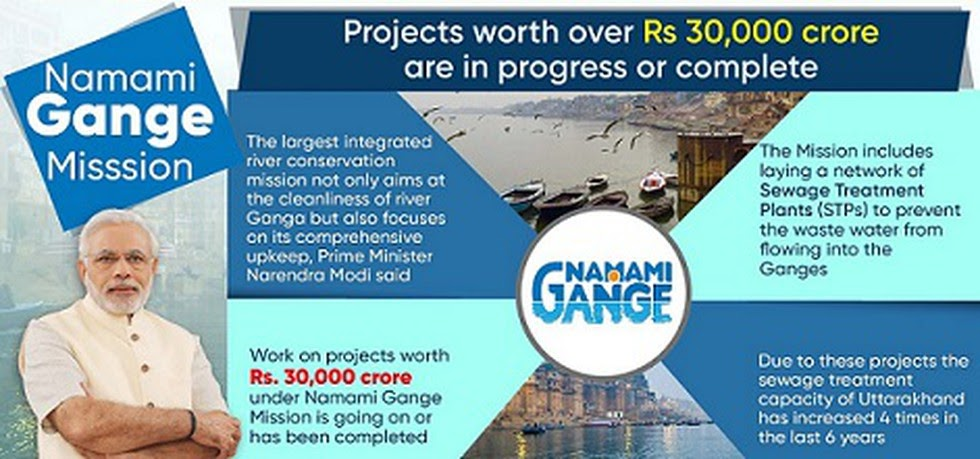The Namami Gange mission, launched by the Government of India in 2014, is a testament to India’s unwavering commitment to preserving its natural resources, particularly the Ganga River. This significant initiative, falling under the jurisdiction of the Ministry of Jal Shakti, aims to clean and restore the Ganga River and its ecosystem, with the ultimate goal of returning it to its pristine state.
At the core of the Namami Gange mission are over 4,000 dedicated volunteers, known as the Guardians of the Ganga. These volunteers work tirelessly to ensure the preservation of the river’s flora and fauna and play a crucial role in maintaining its ecological balance. Collaborating with the Wildlife Institute of India, the initiative also provides livelihood training to empower these volunteers in their efforts to safeguard the river.
The objectives of the Namami Gange mission are multi-faceted. Firstly, it focuses on cleaning the Ganga River and eliminating the pollutants and waste that have accumulated over the years. Secondly, it emphasizes the conservation and rejuvenation of the river’s ecosystem, including its diverse plant and animal life. Additionally, the mission seeks to promote the sustainable development of the villages along the riverbanks.
The vision of the Namami Gange mission is to transform the Ganga River into a clean, pollution-free, and ecologically vibrant system. It aspires to make the Ganga a symbol of national pride, admired worldwide for its ecological richness and its positive impact on the communities dependent on its waters.
The impact of the Namami Gange mission has been significant. It has led to the improved health of the Ganga River by reducing pollution levels and enhancing water quality. This, in turn, has benefited the flora and fauna that rely on the river for their survival. The mission has also raised awareness among local communities about the importance of preserving the river and adopting sustainable practices.
With a funding allocation of $5 billion (30,000 Cr), the Central government has demonstrated its strong financial support for the Namami Gange mission. This funding is used for various purposes, including pollution control measures, cleaning projects, conservation initiatives, and livelihood training programs for the Guardians of the Ganga volunteers.
In conclusion, the Namami Gange mission exemplifies India’s dedication to preserving its natural resources, particularly the Ganga River. Through the collective efforts of volunteers and strong government support, the mission strives to restore the river’s ecological health and ensure a sustainable environment for both wildlife and human communities.





